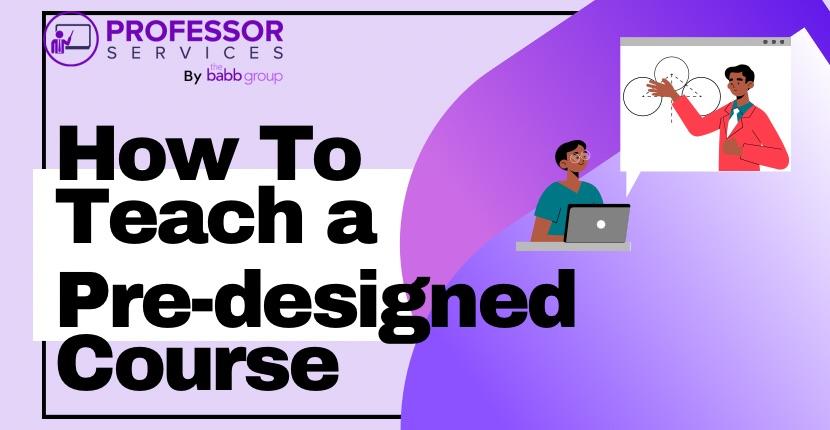As organizations get savvier about working with instructional designers, instructors often teach pre-developed courses. It might come in a tidy package complete with resources, videos, mini-lectures, quizzes, discussions, and assignments, all created for you. This saves hours of work for an instructor but also poses challenges. How do you personalize the course, connect with students, and prepare to teach the course?
Here are 5 tips to effectively teach a pre-designed course.
Review the Entire Course
“When I’m teaching a pre-designed course or mentoring other professors, I encourage them to review the course in its entirety before it starts,” says Dorothy Miraglia, the Vice President of Professor Services for The Babb Group.
Test all the links and resources in the course to ensure they open correctly. Familiarize yourself with any videos, resources, and content, so you are prepared to answer student questions and complement the content with information from your professional experiences.
Engage directly with students
Use students’ names in your feedback and messages. Send emails with reminders. Miraglia also encourages professors to email students who are succeeding and doing well.
“Receiving those types of positive emails can be rewarding and motivating for top performers,” she said.
Use the discussion board judiciously to engage with students. Find a balance between asking them questions that advance the discussion and directing it. Sometimes, it works well to leave the debate among students and for you to provide individual feedback.
Personalize the Course
It’s always helpful to add your personal touch to a course. Check with your institution about areas of the course where you can add your own videos or link to your videos. Videos are an effective tool for connecting with students and building trust. Consider adding weekly announcements with videos so students can see and hear from you.
Add Extra Resources
Miraglia suggests adding extra resources if you can.
“Research additional materials, like scholarly articles and TEDTalks to include,” she said.
If you have resources from prior teaching experience or your professional work, share them with students.
Check with your institution about adding extra content. If you cannot add it to weeks or modules, see if you can offer additional content in announcements or the discussion board.
Continuous Improvement
Miraglia encourages instructors to keep learning.
“Always continue to educate yourself and review your teaching style to ensure you facilitate the course to the best of your ability,” she said.
Take advantage of orientations and ongoing trainings offered by the institution.
Still have questions or need ideas? Talk to a Professor Services mentor to learn more about best practices and how you can apply these tools to your next course.
Angela
Latest posts by Angela (see all)
- The Art of Connection: Networking and Professionalism in Academia - July 25, 2024
- Got the Teaching Job? Now, You Need To Attend the Faculty Training - July 1, 2024
- Higher Education Trends: Insights from Our COO, Sheila Fry - June 20, 2024
